Photo by darknessgamer739 on wallpaper.com
Progem - A Pelican Theme
📷 Screenshot
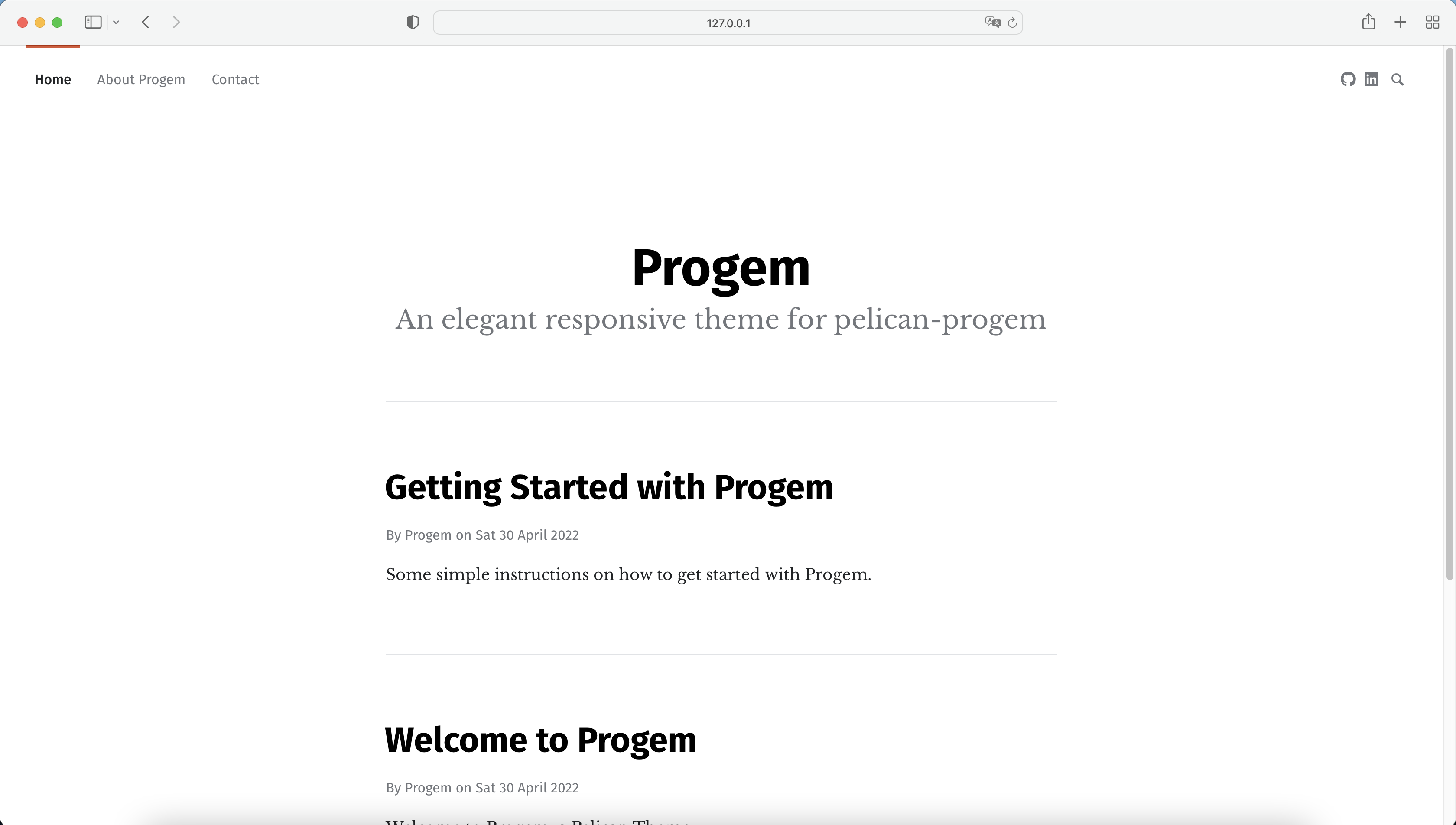
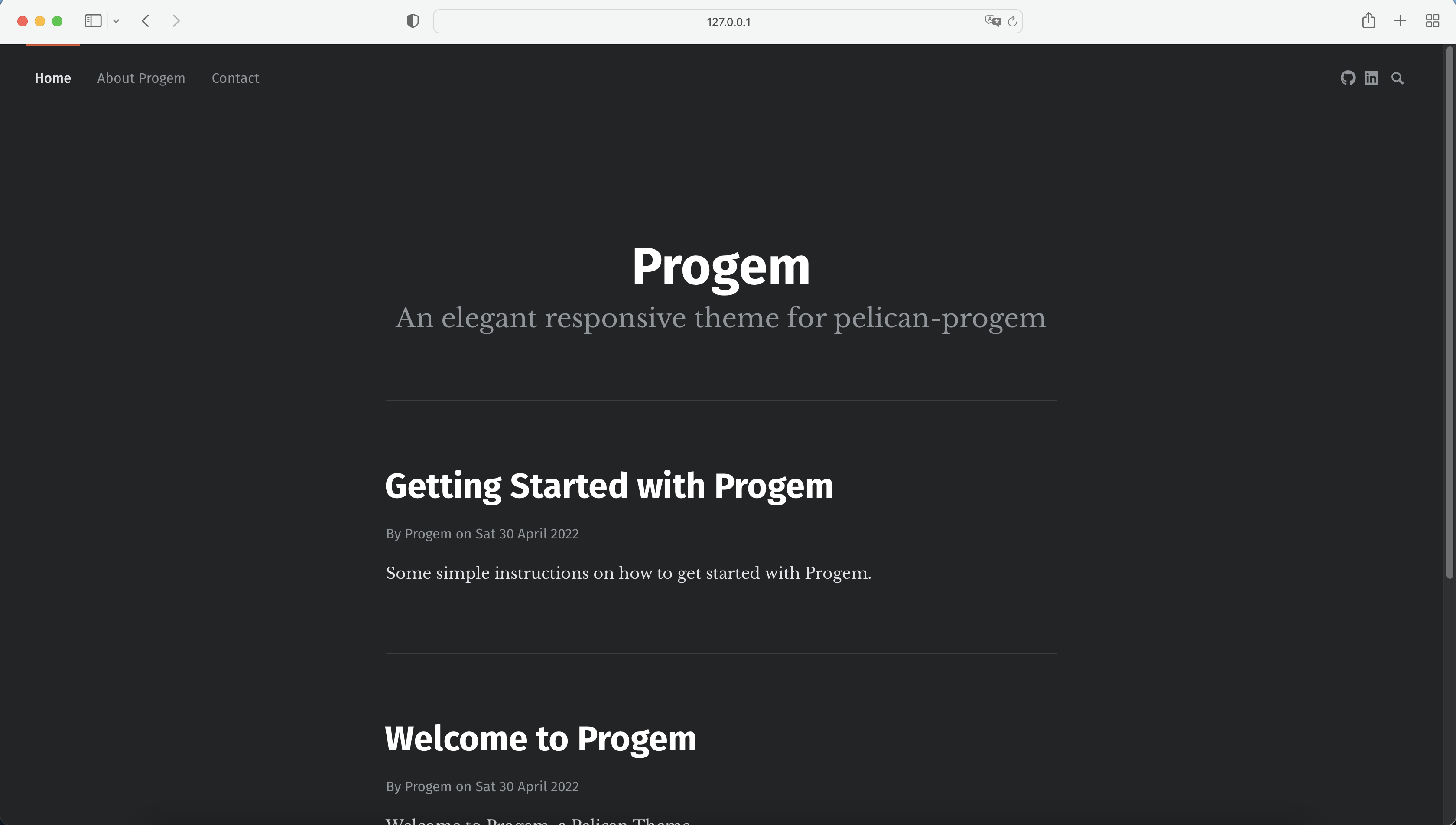
💻 ➡️ 📱 Responsive
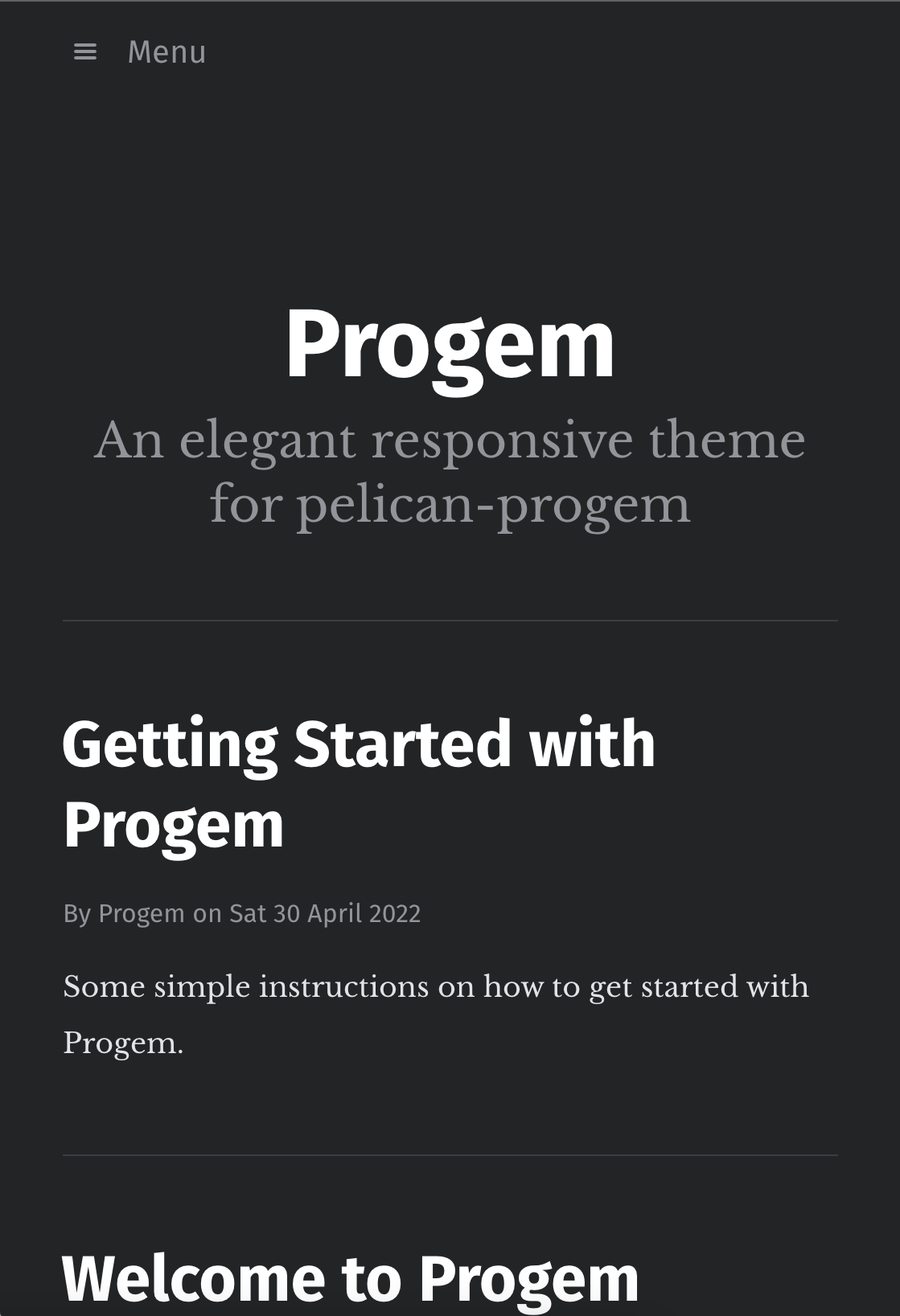
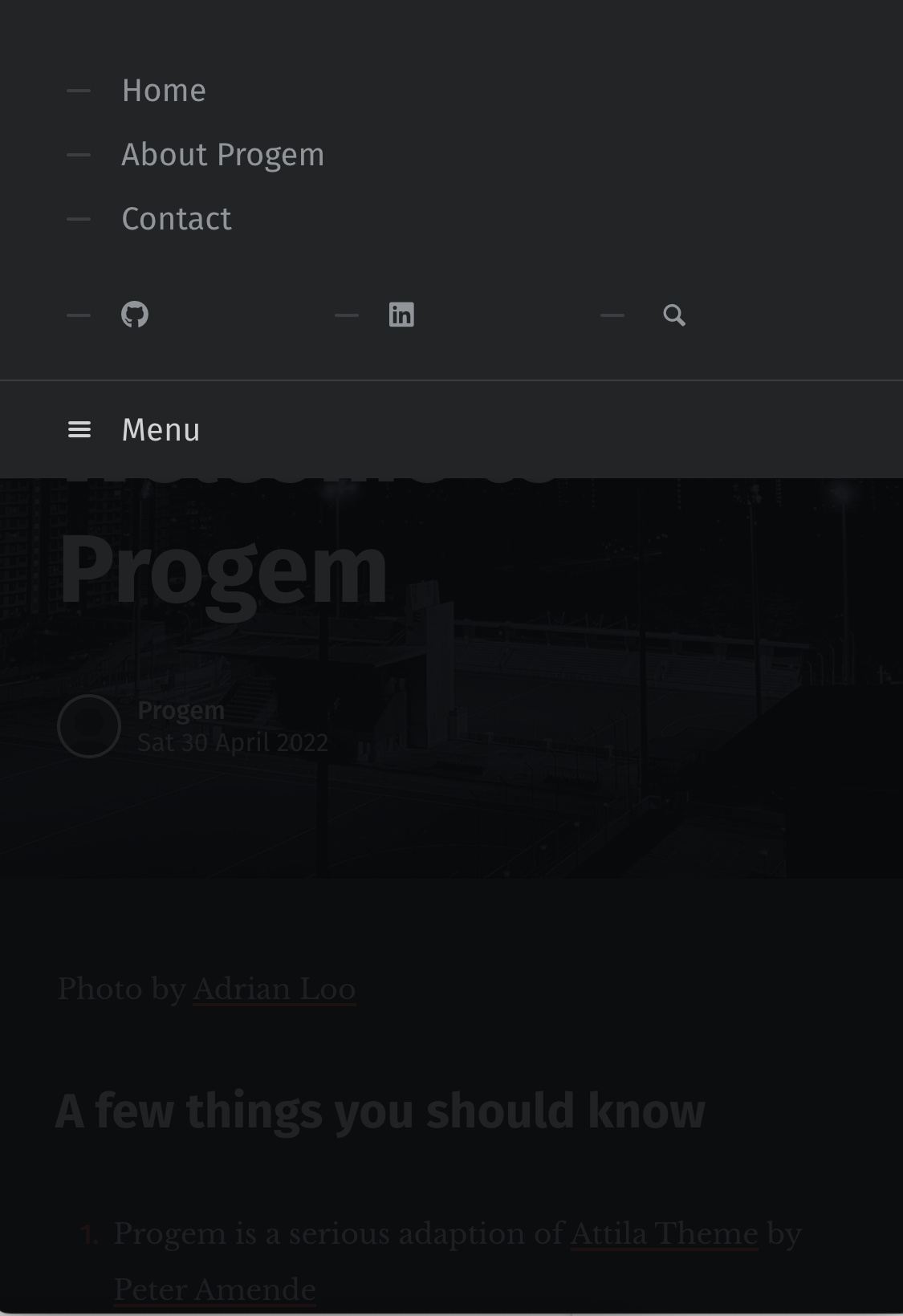
⭐️ Features
- Theme options
- Responsive layout
- Light and Dark Mode
- Search & Popular Tags
- Code highlight including line numbers
📥 Install Progem theme
First, choose a location to hold your themes. For this example, we'll use the directory ~/pelican-themes/progem, but yours could be different. Clone the pelican-themes repository to that location on your local machine:
git clone https://github.com/spydermaxi/pelican-progem ~/pelican-themes/progem
Now you should have Progem repository stored at ~/pelican-themes/progem.
To use one of the themes, edit your Pelican settings file (pelicanconf.py) to include this line:
THEME = "/home/user/pelican-themes/progem"
⚙️ Setup Pelican Plugins
Neighbor Articles: A Plugin for Pelican - Neighbors is a Pelican plugin that adds Next/Previous links to articles.
Installation - Simply activate your environment and install via:
python -m pip install pelican-neighbors
Usage - The theme uses the prev_article and next_article variables to create links in article page in jinja templating. No configuration required from you.
Image Process: A Plugin for Pelican - Image Process also makes it easy to create responsive images using the HTML5 srcset attribute and <picture> tag. It does this by generating multiple derivative images from one or more sources.
Installation - Simply activate your environment and install via:
python -m pip install pelican-image-process
Usage - Add the following codes into pelicanconf.py file to enable responsive srcset images
IMAGE_PROCESS = { "large-photo": { "type": "responsive-image", "sizes": ( "(min-width: 1200px) 800px, " "(min-width: 992px) 650px, " "(min-width: 768px) 718px, " "100vw" ), "srcset": [ ("600w", ["scale_in 600 450 True"]), ("800w", ["scale_in 800 600 True"]), ("1600w", ["scale_in 1600 1200 True"]), ], "default": "800w", }, }
🕹️ Setup Custom variable
Add additional variables into pelicanconf.py:
Theme
# Example directory of progem THEME = "/home/user/pelican-themes/progem"
Site Subtitles
SITESUBTITLE = 'An elegant responsive theme for pelican-progem'
Social Widgets
# Social widget should be in tuple format ('social-name', 'social-website') # SOCIAL = (('github', 'http://github.com/spydermaxi/pelican-progem'), ('facebook', 'https://facebook.com'), ('instagram', 'https://instagram.com'), ('youtube', 'https://youtube.com'))
🔠 Setup custom google fonts
Go to fonts.google.com and choose a font.
Select font style or styles
Choose Embed and copy the <link> code.
Add this to base.html header:
<link href="https://fonts.googleapis.com/css2?family=Mukta&display=swap" rel="stylesheet"> <link href="https://fonts.googleapis.com/css2?family=Crimson+Text&display=swap" rel="stylesheet"> <style> :root { --font-primary: 'Mukta', sans-serif; --font-secondary: 'Crimson Text', serif; } </style>
✍🏼 Writing content
Each article allows the author to include a cover image.
To add the image simply add the Feature_Image meta data at the top of the article like so:
<!--- Example meta information in markdown --> Feature_Image: images/light_times_square.jpg
# Example meta information in rsT :feature_image: images/light_times_square.jpg
The images/light_time_square.jpg is where you store the original image in your content/images/ directory
Here's how it looks like in the article in .md file:
Title: Getting Started with Progem Date: 2022-04-30 22:00 Tags: getting started, progem, how to Slug: getting-started-with-progem Authors: Progem Feature_Image: images/light_times_square.jpg Summary: Some simple instructions on how to get started with Progem.
Another example in .rst file:
Getting Started with Progem ########################### :date: 2022-04-29 22:00 :tags: getting started, progem, how to :slug: getting-started-with-progem-rst :authors: Progem :feature_image: images/light_times_square.jpg :summary: Some simple instructions on how to get started with Progem.
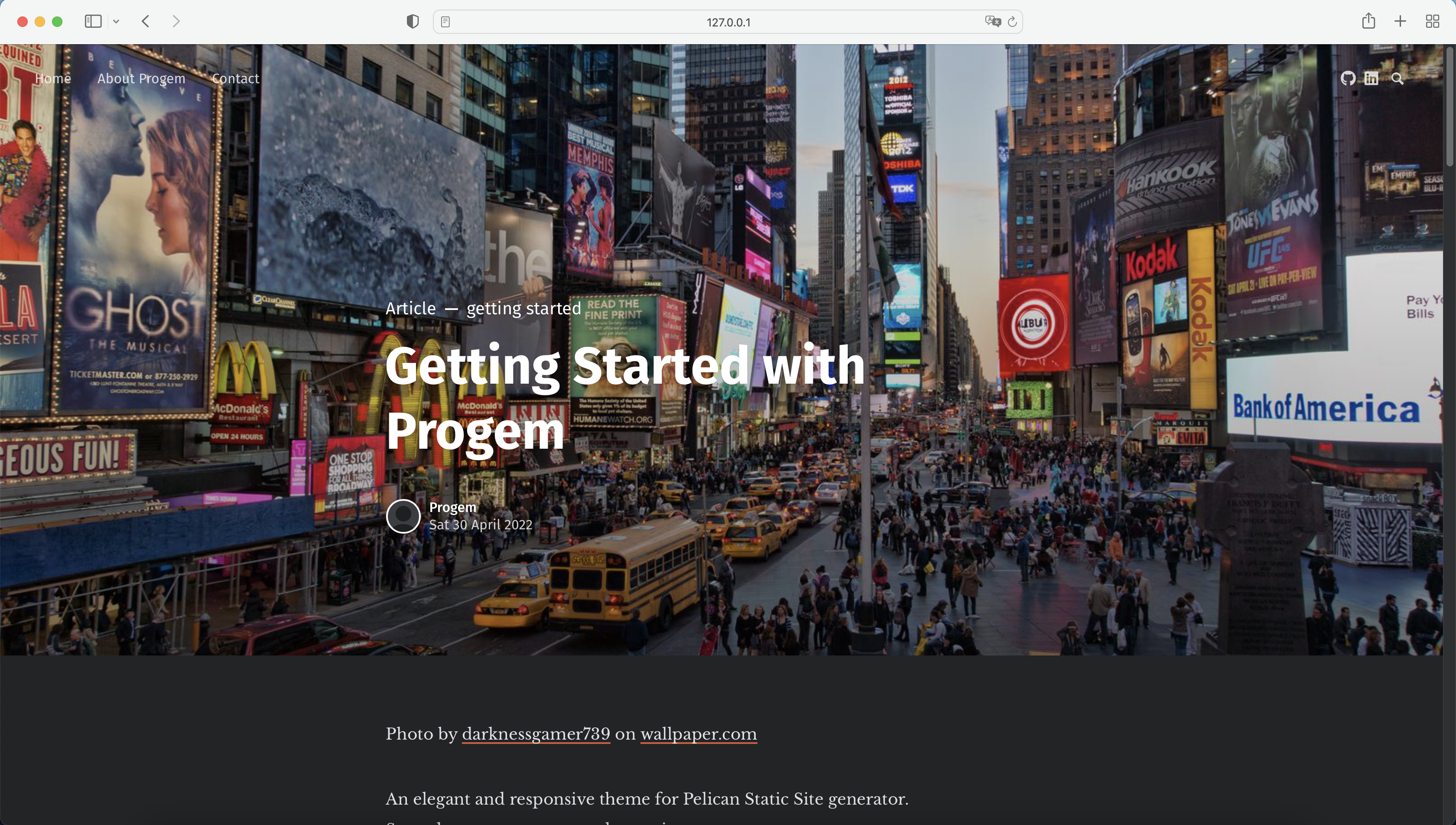
🪄 Tips and Tricks
Code blocks
Although Pelican supports both rsT and Markdown formats. Code blocks display better on this Theme in rsT than in Markdown.
Example content input in Markdown
[//]: # (Markdown Code Block demo) ``` def print_progem(): print("Pelican is a statis site generator") print("Progem is an elegant theme for Pelican") ``` or [//]: # (Markdown Code Block demo) :::python def print_progem(): print("Pelican is a statis site generator") print("Progem is an elegant theme for Pelican")
will produce the following display:
def print_progem():
print("Pelican is a statis site generator")
print("Progem is an elegant theme for Pelican")
Whereas content input in rsT
.. code-block:: python def print_progem(): print("Pelican is a statis site generator") print("Progem is an elegant theme for Pelican") or :: def print_progem(): print("Pelican is a statis site generator") print("Progem is an elegant theme for Pelican")
will produce the following display:
def print_progem(): print("Pelican is a statis site generator") print("Progem is an elegant theme for Pelican")
Content images
When writing contents, insert image using the following codes:
.. image:: {static}/path/to/image.png :alt: This is an image in contentThe :alt: declaration and static path {static} are required.
Avoid double underscores
Avoid syntax with double underscores in backquotes. This will cause errors during pelican contetn production
Input this syntax __Content Underscores__, will generate the following error
ERROR Could not process ./your_rst_file.rst /path/to/you_rst_file.rst:: (ERROR/3) Anonymouse hyperlink mismatch: 1 references but 0 targets. see "backrefs" attribute for IDs
⚖️ Copyright & License
Copyright (C) 2022 Adrian Loo - Released under the MIT License.
